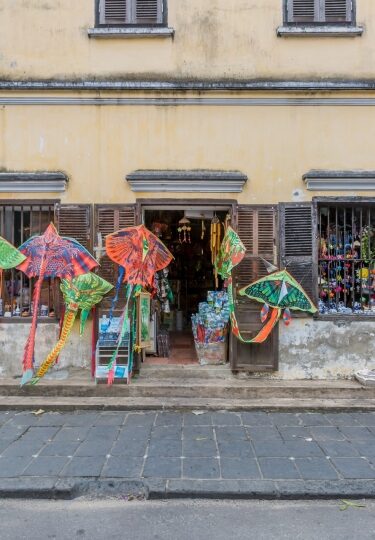There are an incredible number of things to do in Hoi An, all packed into a relatively compact geographic area of Vietnam, just south of Da Nang on the east coast.
For nearly four centuries, this was once one of the most prosperous and significant trading ports in the region. Wealthy merchants flocked here, leaving beautifully constructed houses and shops in their wake.
Much of the 18th- and 19th-century architecture survives to this day, giving Hoi An’s historic center the feel of a time warp. It helps that since 1999, the whole area, officially known as Hoi An Ancient Town, has been a designated UNESCO World Heritage Site.
With its near absence of cars and density of heritage sites, Hoi An is a highly approachable city and a pleasure to explore on foot. Whether you delve into the region’s history, dine on superb local eats, or learn all about artisanal crafts, there’s much to discover here.
Bicycle Around Hoi An Ancient Town
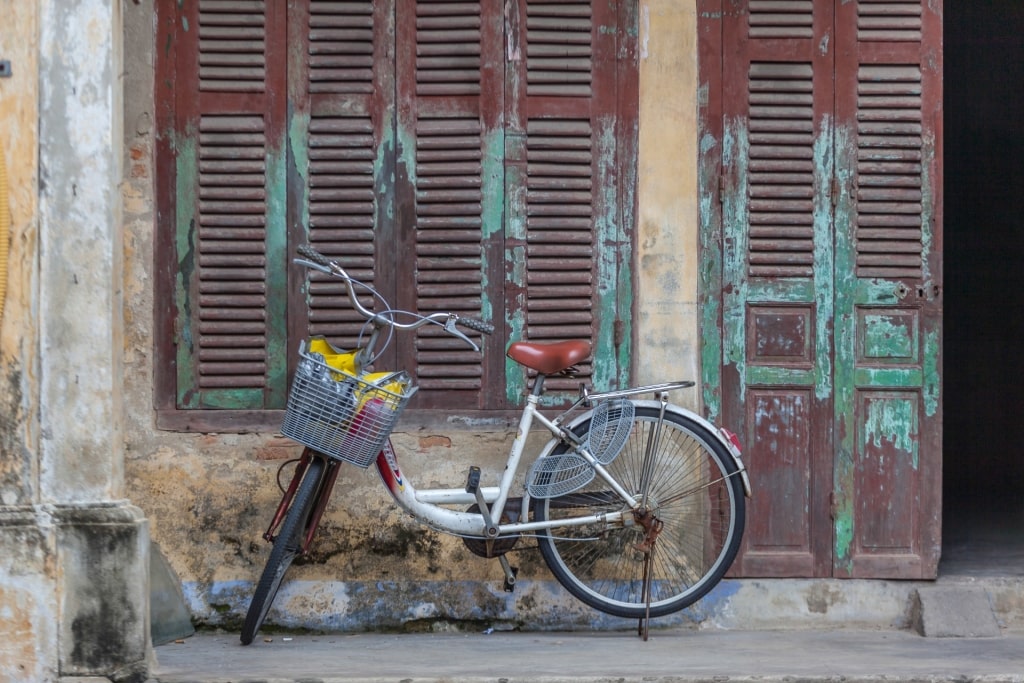
Hoi An Ancient Town
Exploring Hoi An’s Old Town is one of the best things to do in Vietnam, and the best way to explore the sights is on a bike. Most of these streets are completely closed off to cars, making them blissfully free of the traffic jams common in other Vietnamese cities.
You could easily opt for a leisurely stroll around town, but a bicycle allows you to pick up the pace a bit. Affordably priced bicycle rental services are available all over town. Collect your set of wheels and prepare for a scenic ride between all the major sights.
Or take a guided tour, which will lead you through rural villages and emerald paddy fields outside Hoi An, as well as through the center.
Feast on Street Food

Vietnamese street food
Hoi An’s street food scene is unparalleled in much of Southeast Asia. Hawkers can be found on just about every corner, keeping the many pedestrians well-fed.
For the uninitiated, Vietnamese food incorporates an astonishing array of balanced flavors. Keep an eye out for bánh xèo, lacy, turmeric-tinted crepes loaded with vegetables or seafood. Bánh bao bánh vạc, or white rose dumplings, have chewy skins encasing a flavorful shrimp or pork filling.
Mì Quảng, Central Vietnamese noodles which sport a similarly luminous golden hue to, come topped with quail eggs, herbs, and assorted proteins. Bún thịt nướng comes with vermicelli piled with slices of well-seasoned pork, plus plenty of herbs, chiles, and a peanut-based sauce.
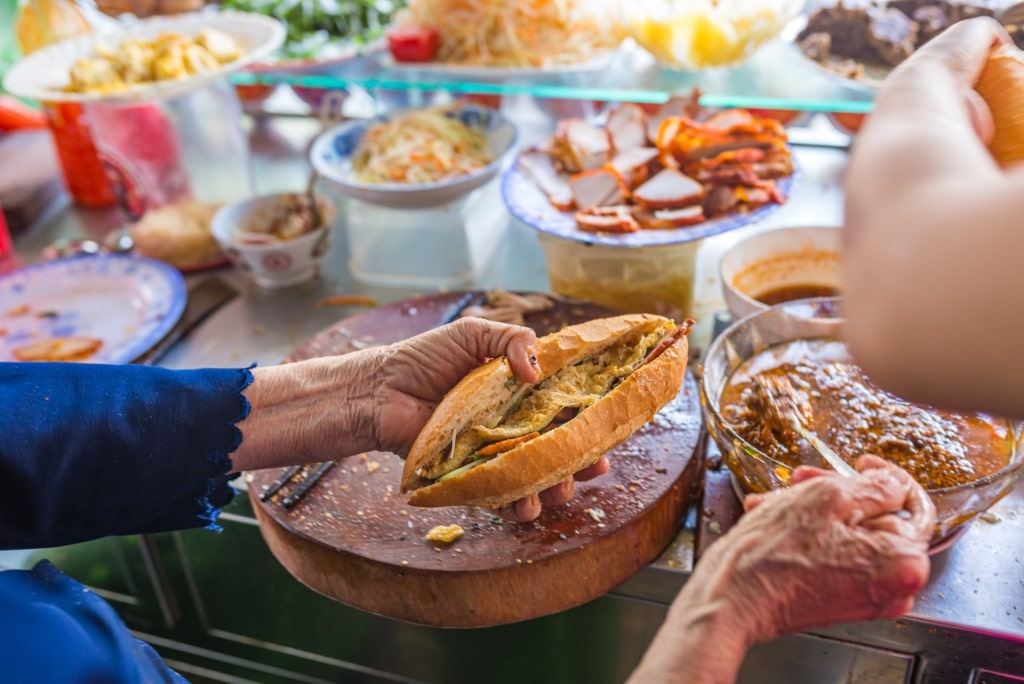
Banh mi
Of course, banh mi, a magnificent fusion sandwich born in part from French colonial rule, is well-represented here. Invented in the 1950s following the defeat of the French, the dish is one of the most iconic staples Vietnam is known for.
The best banh mi shops rely on freshly baked bread, which has a slightly sturdier interior than a baguette, and pile on plenty of pickles, pork pate, and other toppings. Wash it all down with a Vietnamese-style iced coffee, or cà phê sữa đá, made with sweetened condensed milk.
Take a Boat Ride Down the Thu Bon River
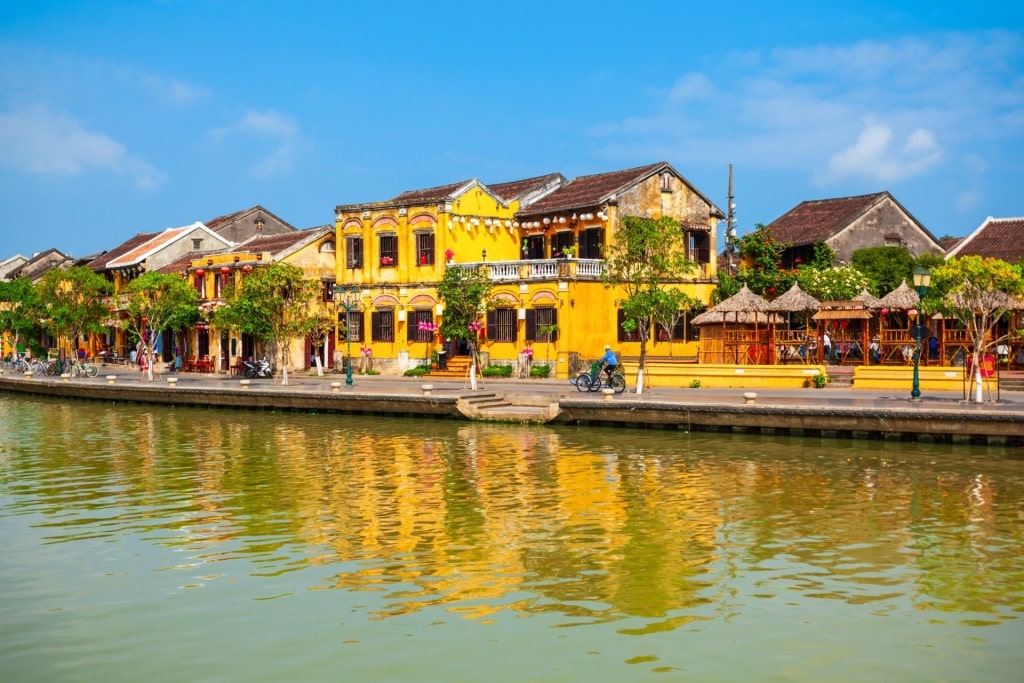
Thu Bon River
The Thu Bon River, which runs right through the heart of Hoi An, is the lifeblood of the city. For centuries, this waterway was central to the city’s role as a trading port. Merchants ferried valuable textiles, ceramics, and other fine wares by boat. The river’s annual overflow also meant that the surrounding land was particularly fertile and excellent for growing crops.
One of the best ways to take in the sights is on a scenic boat ride. Many of the longer boat trips include stops at some of the small craft villages located outside of the historic city center.
Snap a Selfie in Front of the Japanese Bridge
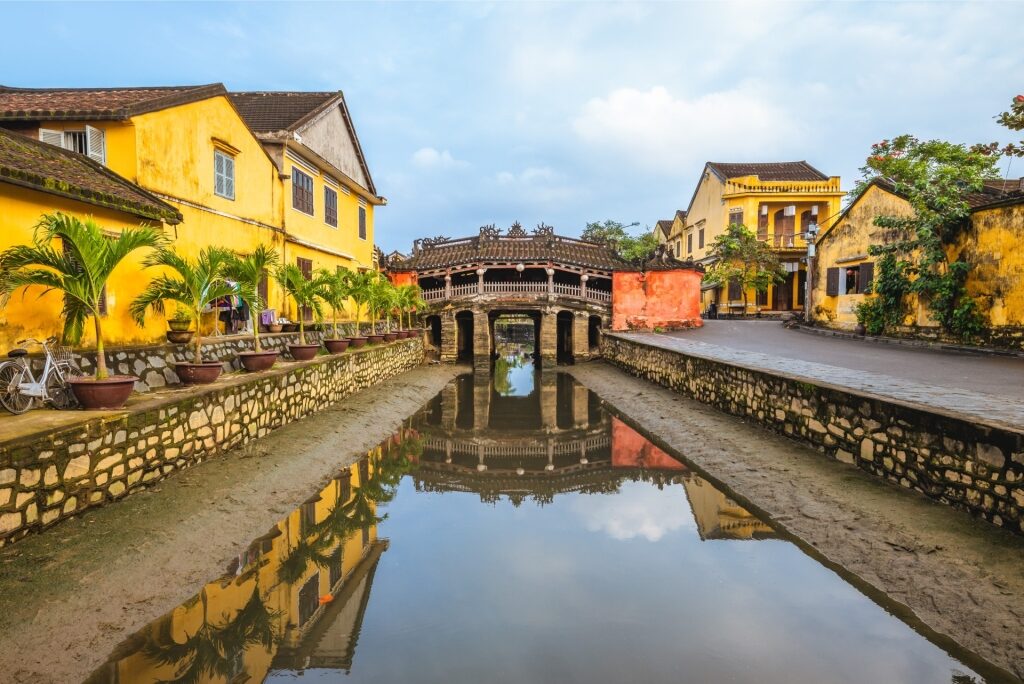
Japanese Bridge
Easily the most recognizable landmark in Hoi An, the Japanese Bridge is a symbol of lasting cultural friendship. Known as Chùa Cầu in Vietnamese, this covered bridge dates back to the 17th century and spans the Thu Bon River. The bridge unites what was once the Japanese and Chinese quarters of the city.
What’s more, the design of the bridge itself cleverly integrates elements of Japanese, Vietnamese, and Chinese architecture. While the bridge is most often photographed illuminated after dark, it’s equally impressive during the daytime.
Slurp a Bowl of Cao lầu
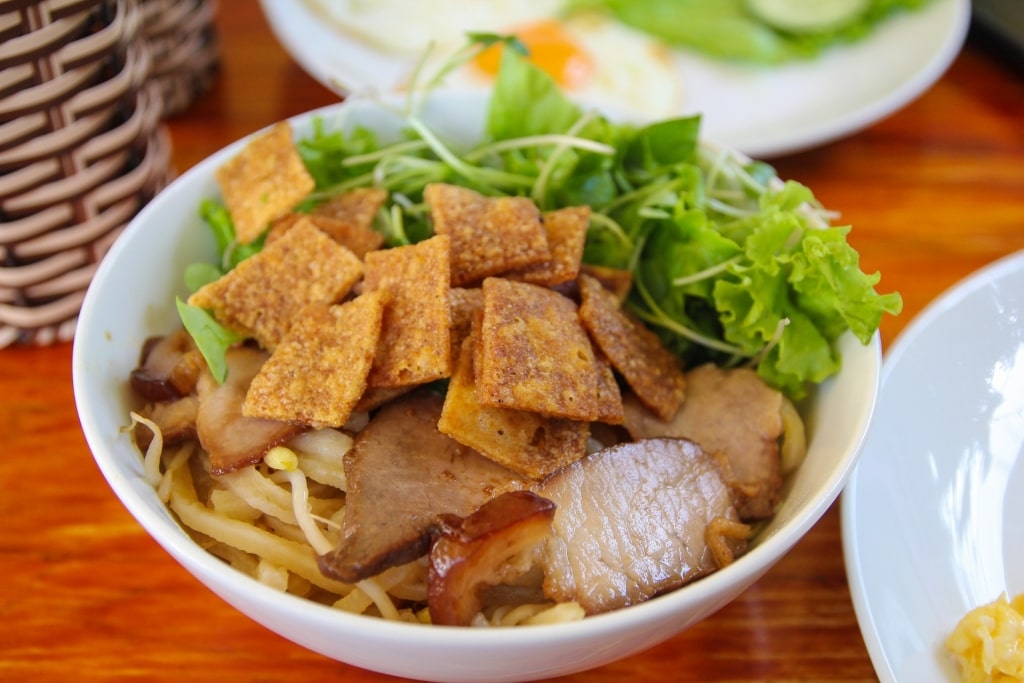
Cao lầu
If you haven’t sampled a bowl of this city’s signature noodles, did you really even visit Hoi An at all? Cao lầu is an instantly addictive street food staple found throughout the historic center. As with many of Vietnam’s iconic noodle dishes, this deceptively simple dish is all about the details.
Each bowl consists of chewy rice noodles, roast pork, greens, beansprouts, and fistfuls of fresh herbs. From there, individual recipes can vary quite a bit. Most cooks opt to add a little bit of broth, although some prefer to serve their noodles dry. Shrimp are a common addition, as are crunchy pork cracklings.
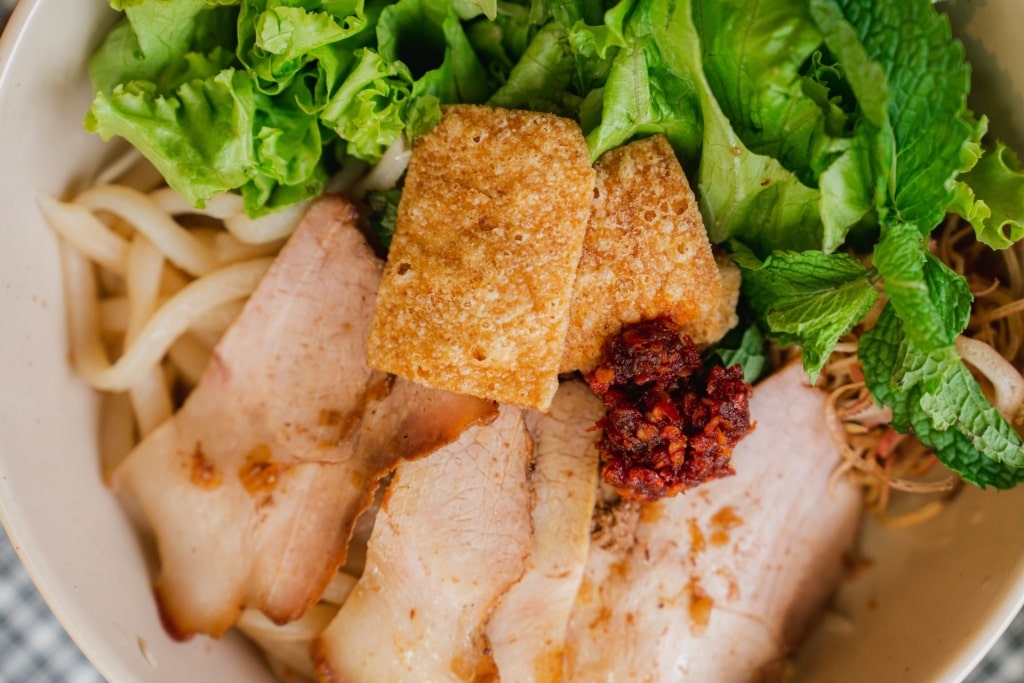
Cao lầu
Cao lầu is such a delicious combination of flavors and texture that you might wonder why it’s not found all over Vietnam. Many locals would argue that these noodles just aren’t quite right without the presence of hyperlocal ingredients.
Only water from the Bá Lễ well should be used for authentic noodles. Meanwhile, ash from the bark of trees in the Cham islands are used to make lye water, which helps give the noodles their distinctive bouncy texture.
Read: The Ultimate Guide to Southeast Asian Food
Visit the Tan Ky Old House
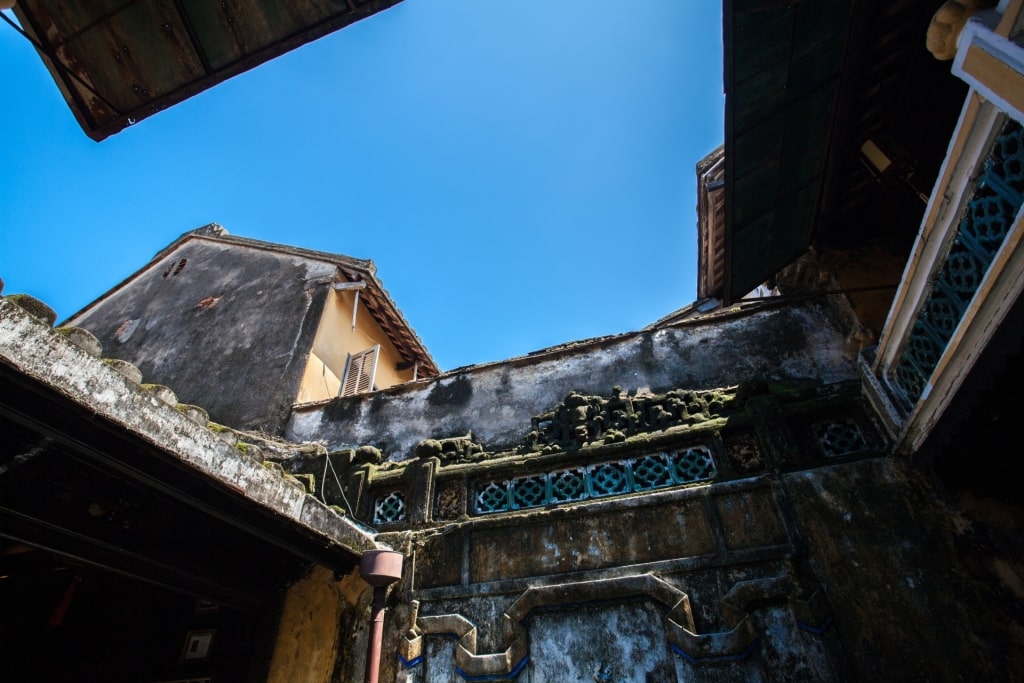
Tan Ky Old House
A blend of Chinese and Japanese architectural styles, the Tan Ky Old House is a fascinating stop for design fanatics. Built in 1741, this building was home to seven generations of the prosperous Le family, who made their fortune in trading agricultural goods. To this day, it is considered one of the finest and best-preserved pieces of heritage architecture in Hoi An.
Virtually all of the building is constructed of hardwoods and decorated in elaborate lacquered boards. As with many houses of that era, a central courtyard provides ventilation and natural light.
Tours of the building are relatively short, making it easy to admire this house en route to other historical sites during the afternoon.
Shop for Fine Fabrics at Hoi An Silk Village
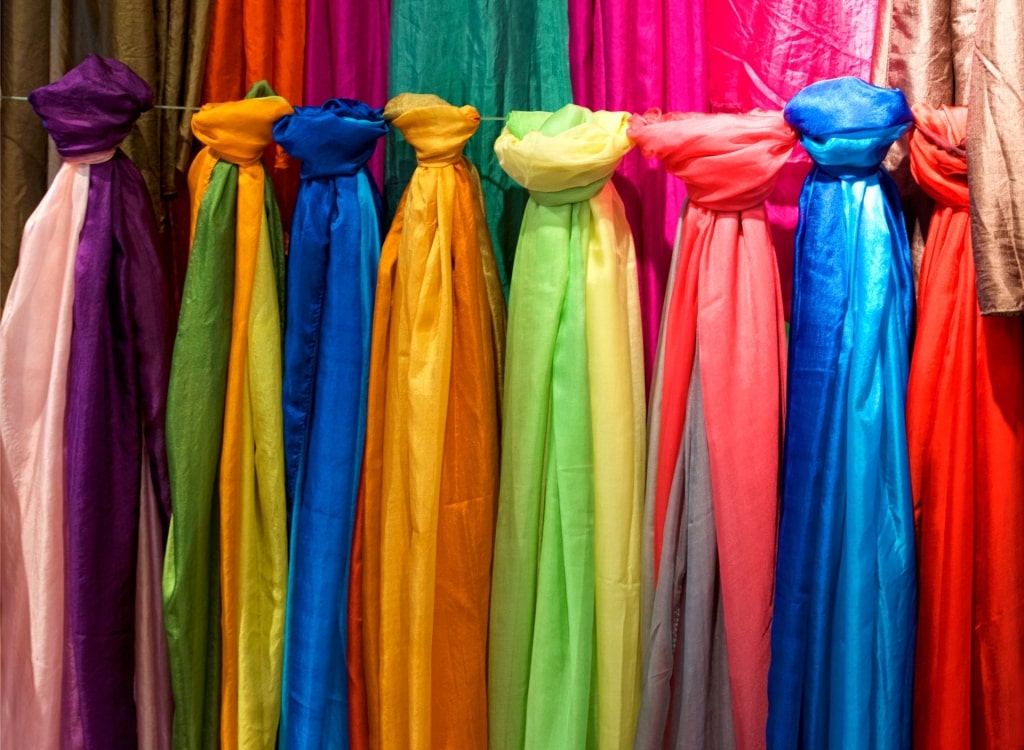
Vietnamese silk
Sericulture, or the art of making silk, has been practiced in Vietnam for more than 1,000 years. Unlike its synthetic imitators, true silk is remarkably light and breathable, making it the perfect fabric for the country’s often humid climate. A silk shirt or dress magically manages to keep the wearer cool on hot days and warm in chilly weather.
If you want the genuine stuff, be prepared to pay a little bit extra for it. Making silk is an incredibly time- and labor-intensive process. Still, even top-tier fabrics are often a relative bargain here compared to their equivalents in Western department stores.
For travelers curious to learn more about the silk-weaving process, Hoi An Silk Village makes for an enjoyable, educational stop. Visitors can wander around a traditional ruong house and learn about the history of the silk trade in Hoi An.
For first-time buyers, this is a great way to learn all about how to spot the difference between high-quality fabrics and fakes. Naturally, there are opportunities to purchase silk garments to take home.
Browse Hoi An Central Market

Vietnamese souvenirs
Hoi An Central Market is a riot of colors and scents that takes place from dawn to dusk daily. Although the city boasts several markets—including Tiger Market and Ba Le Market—this is by far the largest. It’s located right near the center of the old town and it sprawls for what feels like forever. A tiled roof covers most of the market from rain, but the doors are open to the air and the Thu Bon River.
Inside, you’ll find an enormous array of stalls selling everything from textiles to kitchenware, shoes to ceramics. There are also quite a few hawkers serving freshly made food.
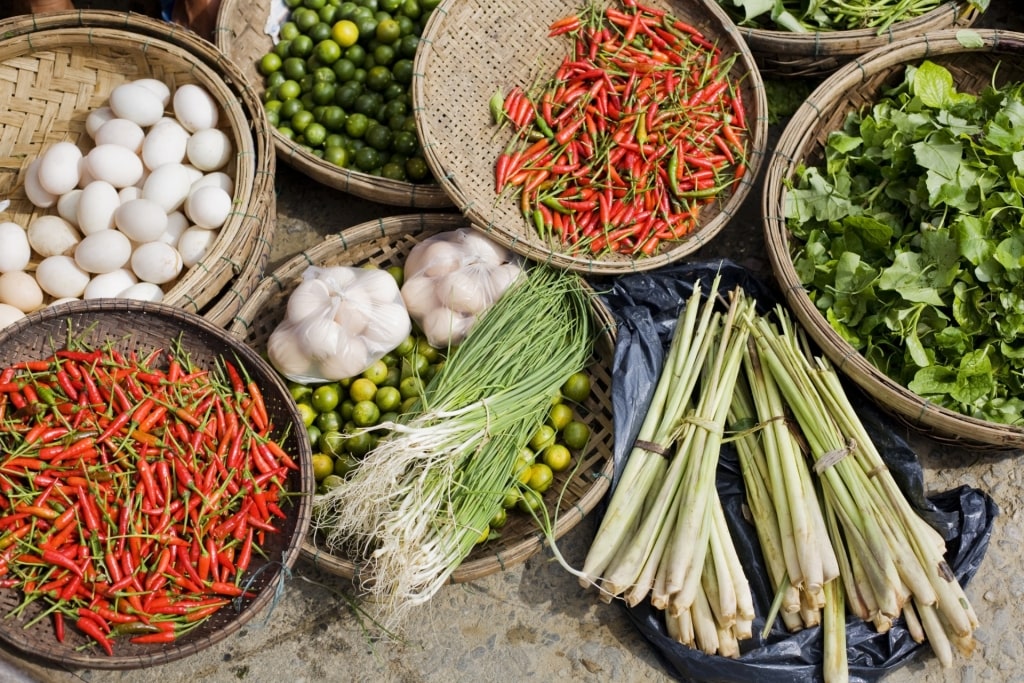
Hoi An Central Market
While there are more than a few touristy Vietnamese souvenirs and trinkets here, this is still very much a space used by locals to buy groceries. The meat, fish, and vegetable markets are all well worth checking out. Pick up a bag of mangosteens, rambutans, or other fruit for snacking later while you’re here.
Although the market is open all day, if you want to shop as the locals do, it pays to get here as early as possible. Savvy shoppers here know that the best produce tends to go quickly. Temperatures also tend to be pleasantly cool early in the morning, which makes it a much more enjoyable experience to browse the narrow pathways between stalls.
Check Out the Fujian Assembly Hall
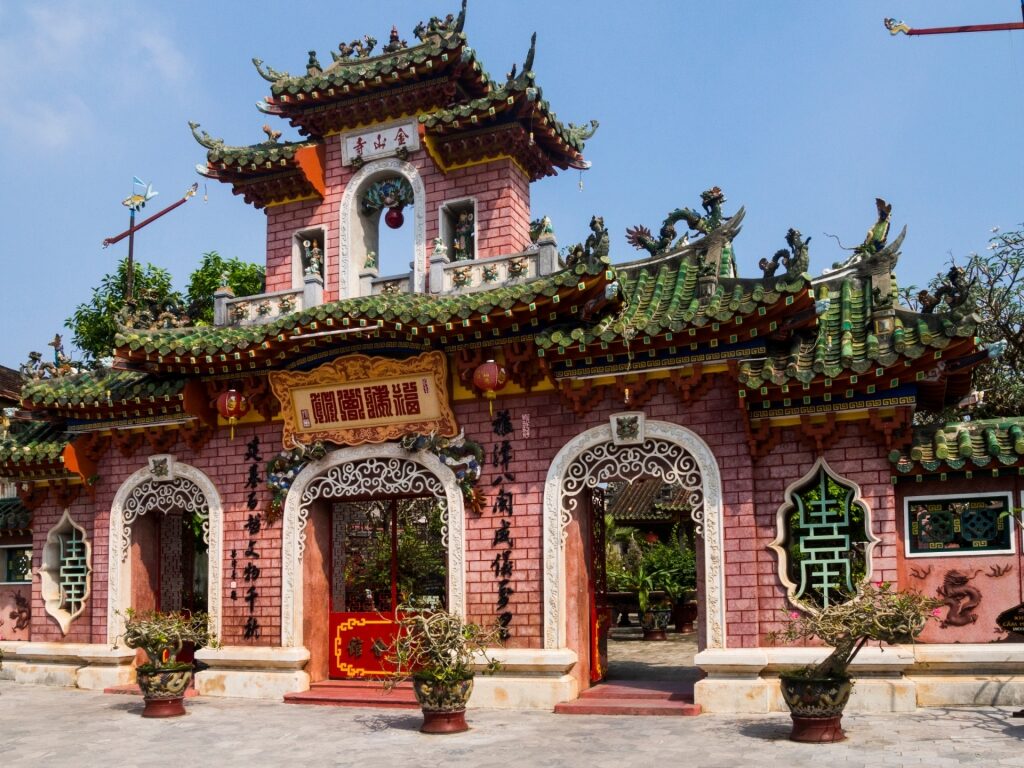
Fujian Assembly Hall
With its striking red-brick facade, the Fujian Assembly Hall is easy to spot from a distance. Constructed in the 1690s as a temple, the structure has been restored and maintained throughout the years.
Today, it still sports its distinctive swooping tiled pagoda roofs adorned with scarlet lanterns and writhing dragons. It’s easily one of the most popular sites in Hoi An Ancient Town, thanks to its photogenic exterior.
The structure remains an active place of worship and is dedicated to Thien Hau, a goddess who watches over seafarers. In Hoi An’s past, merchants sailing from all over would pay their respects in hope of a safe voyage. Nowadays, couples struggling with infertility often come here with offerings to ask the deity to bring them children.
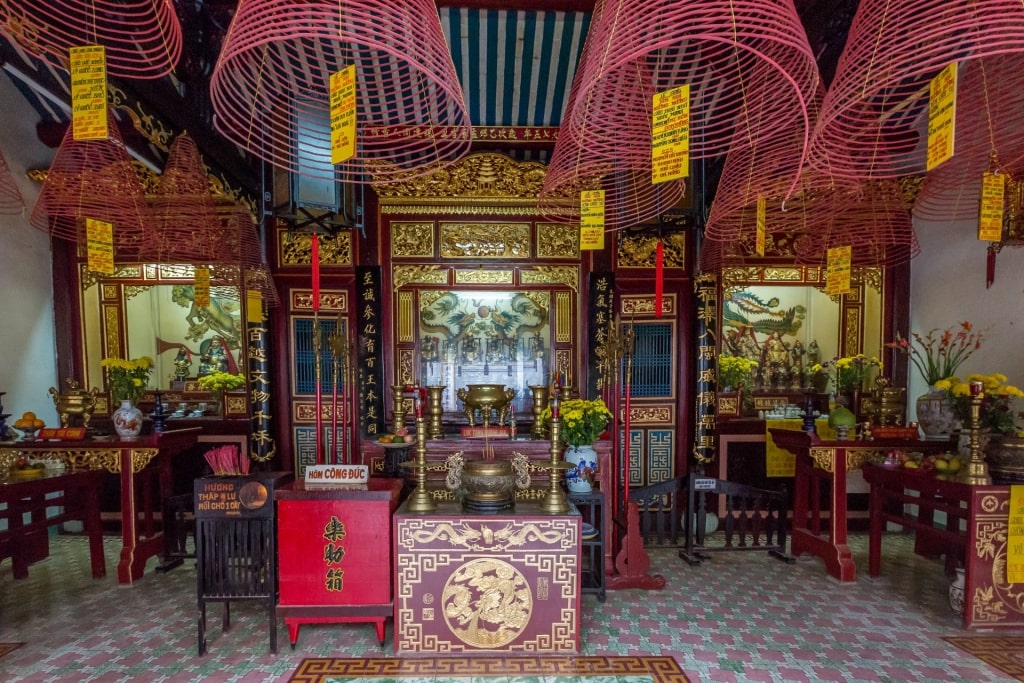
Fujian Assembly Hall
There are a number of details worth looking out for, both in the assembly hall and throughout the premises. Inside, a mural shows the goddess lighting the way for a ship struggling on choppy waters on what appears to be a dark and stormy night. The ship is meant to hold six Fujianese families, who made their way from southern China to Hoi An.
Pay a Visit to Quan Cong Temple
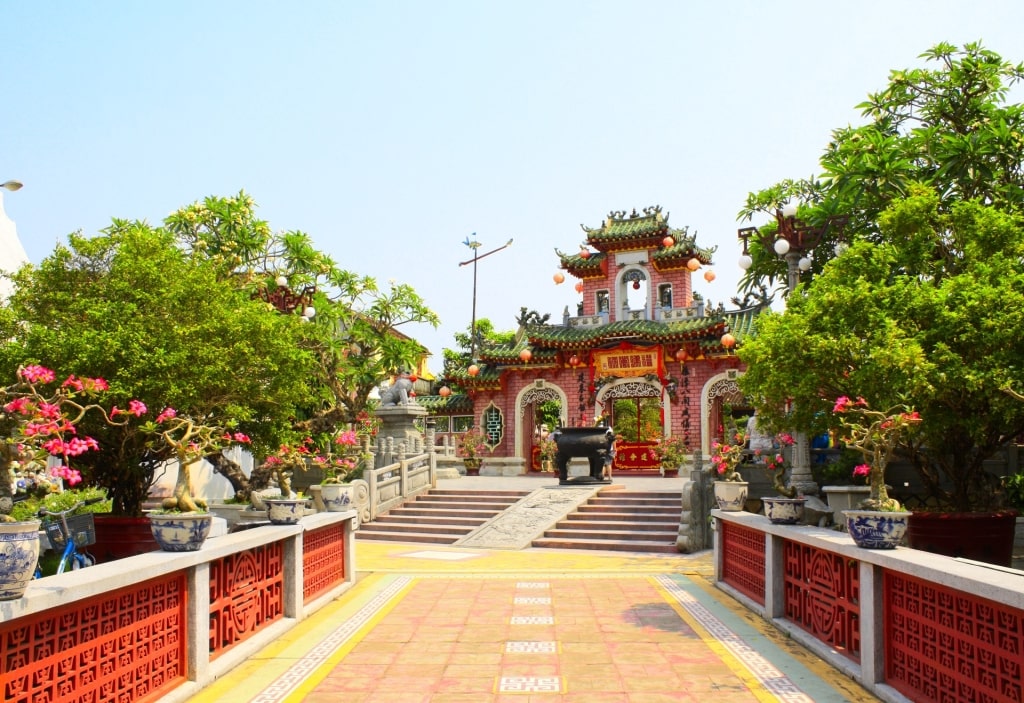
Quan Cong Temple
Built in 1653 as a place of worship, this ornate temple complex is one of the most popular sites in Hoi An Ancient Town. The beautifully maintained temple incorporates elements of both Vietnamese and Chinese architectural design.
You can buy an individual ticket to the temple, or opt for a combination ticket that includes up to five other heritage sites around the historic center. Quan Cong, the general for whom the temple is named, represented loyalty and trustworthiness. As a result, merchants used to pay their respects here in the hope of getting honest deals.
Since this is still a place of worship, it’s important to follow a few ground rules during your visit. Visitors are asked to wear modest clothing—meaning no spaghetti-strap tank tops and short shorts. Bring a cover-up if necessary and be prepared to remove your shoes in certain areas.
Discover the Museum of Trade Ceramics
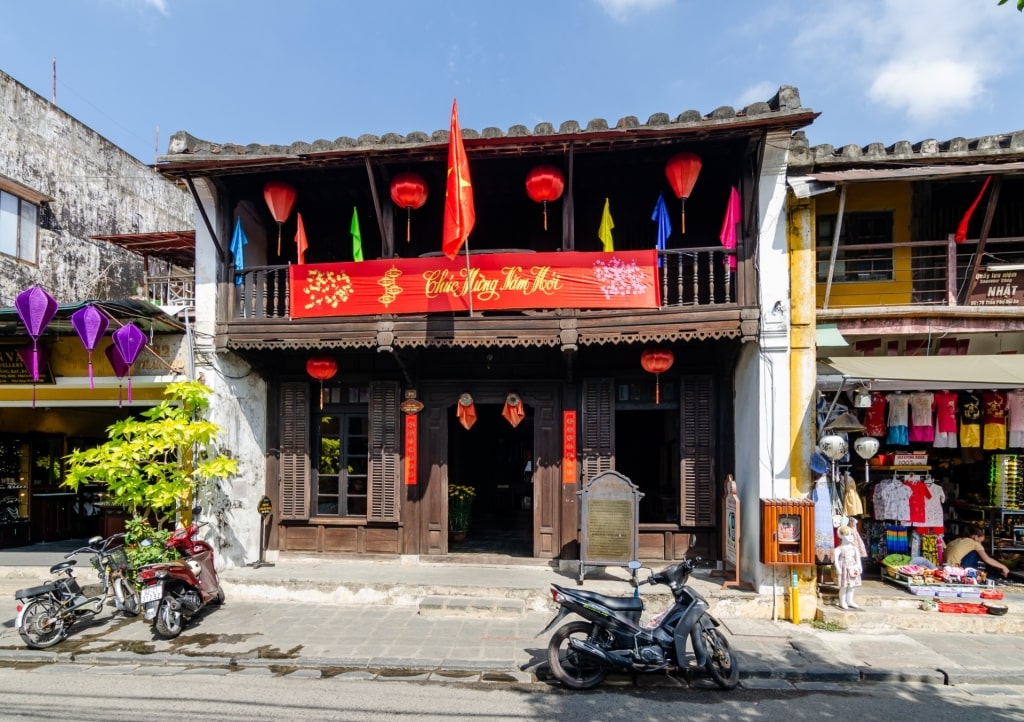
Museum of Trade Ceramics Photo by Steffen Schmitz on Wikimedia Commons, licensed under CC BY-SA 4.0
For centuries, Hoi An was renowned for the skill of its craftsmen. And as a nexus of trade between the East and West, it saw more than its share of high-end goods pass through. Turkish, Dutch, Chinese, Thai, and Japanese ceramics have all been traded here at various points over the centuries.
Housed in a two-story heritage building, the Museum of Trade Ceramics pays homage to this golden age in the city’s past. More than 450 pieces of porcelain and ceramic work are on display inside. The museum is on the smaller side, but makes for a great one-hour crash course in Hoi An’s history and artistic heritage.
Tour the Cantonese Assembly Hall

Cantonese Assembly Hall
Just about any visitor to Hoi An Ancient Town will find themself on Tran Phu Street at some point. The central artery is a litany of well-preserved historical buildings and heritage sites. Among them is the Assembly Hall of the Cantonese Chinese Congregation, also known as Hoi Quan Quang Dong.
Built in 1786 as a religious site dedicated to Confucious and the Mazu goddess, it’s subsequently been dedicated to other secular figures. There’s a spectacular dragon mosaic near the main altar, as well as an impressive dragon statue in the garden out back.
Read: Best Places to Visit in Vietnam
-
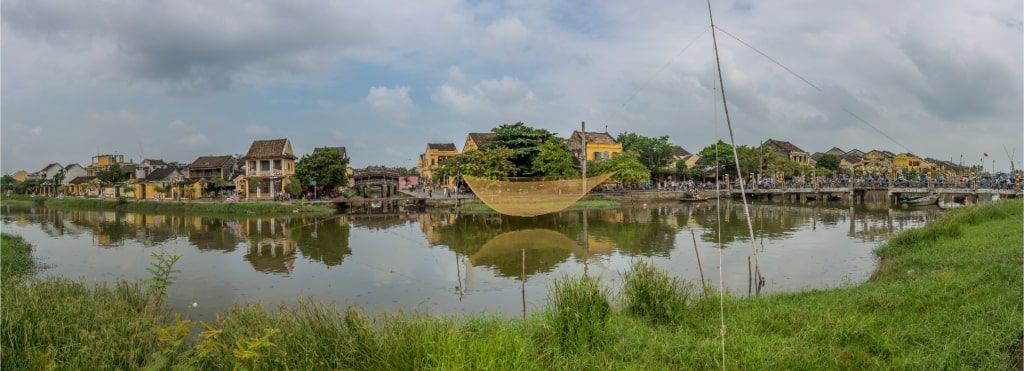
Hoi An Ancient Town
Discover all that this historic trading port has to offer when you explore Hoi An on one of Celebrity’s cruises to Vietnam.
